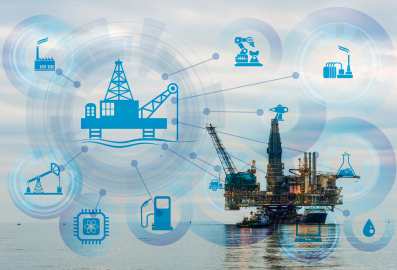Secure energy systems
In the oil, gas and green energy sectors, securing energy systems is vital to national stability and sustainable growth. Critical infrastructure is increasingly targeted by cyberattacks aiming to disrupt operations or steal sensitive data, while the shift to green energy introduces new digital vulnerabilities. NIS2 compliance, ransomware threats and supply chain weaknesses only intensify the pressure on security teams. The margin for error is razor-thin. Any breach can have massive economic, environmental and reputational consequences.
Key Security Challenges:
• Protecting critical infrastructure, including SCADA systems and industrial control environments, from cyber threats.
• Maintaining uninterrupted operations while meeting strict compliance requirements specific to the energy sector.
With Cyberquest SIEM, CQ Automation, Netalert NDR, CQ Threat Intelligence and CQ AI Assistant, you gain the intelligence and resilience to outpace evolving threats and power a secure energy future.
Scenario:
A renewable energy operator observes irregular data transfers between SCADA systems and remote wind turbines. Cyberquest immediately correlates network telemetry, device logs and access events using its built-in connectors. Netalert pinpoints an unauthorized device communicating with multiple endpoints. Automated response workflows are triggered, isolating the threat and preserving operational uptime without disrupting active energy production.

Why Cyberquest and Netalert?
-
NetAlert provides agentless, real-time Layer 2/3 visibility into sensitive environments without impacting performance - ideal for SCADA and remote field systems.
-
Built-in UEBA and threat intelligence modules proactively detect complex attacks, including lateral movement, unauthorized access and insider threats.
-
Features energy-specific correlation rules that enable fast identification and containment of anomalies within production and distribution networks.
Top 5 Concerns
Compliance & NIS2 challenges
Critical infrastructure attacks
Cyber risks in green energy transition
Ransomware & data exfiltration
Supply chain vulnerabilities
Compliance & NIS2 challenges
Oil & gas companies must comply with strict cybersecurity regulations like NIS2, which mandates stronger security measures and incident reporting. Non-compliance leads to heavy fines and legal consequences. Failure to meet these standards can also result in operational shutdowns, loss of government contracts and reputational damage that impacts investor confidence.
Ensure compliance - automate risk management, implement centralized reporting and stay ahead of regulatory challenges.
Key Dangers & Risks:
Critical infrastructure attacks
Cybercriminals target refineries, pipelines and drilling operations, aiming to disrupt production and cause financial losses. A single cyberattack can halt operations, damage equipment and endanger worker safety. These attacks can also trigger environmental disasters, such as oil spills or gas leaks, leading to severe legal and financial repercussions.
Strengthen infrastructure security. Deploy advanced threat detection, segment networks and monitor ICS/OT environments.
Key Dangers & Risks:
Cyber risks in green energy transition
As the industry shifts toward renewable energy sources like wind, solar and smart grids, cyber threats evolve. These emerging energy systems rely on interconnected networks and IoT devices, making them prime targets for hackers aiming to disrupt energy distribution. Without strong cybersecurity, green energy infrastructure remains vulnerable to remote attacks and operational failures.
Secure green energy systems. Protect smart grids, encrypt IoT communications and monitor renewable energy infrastructure.
Key Dangers & Risks:
Ransomware & data exfiltration
Hackers deploy ransomware to lock critical systems and extort payments. Losing access to drilling data, refinery controls or pipeline monitoring can cripple operations and cause environmental hazards. These attacks can also disrupt fuel supply chains, leading to market instability, increased costs and widespread energy shortages.
Prevent ransomware attacks. Implement real-time monitoring, backup critical systems and train staff on cyber hygiene.
Key Dangers & Risks:
Supply chain vulnerabilities
Oil & gas companies rely on a vast network of suppliers, contractors and logistics providers. A single compromised partner can introduce severe cyber risks, leading to data breaches and operational failures. Attackers often exploit weak links in the supply chain to gain access to critical systems, jeopardizing production and regulatory compliance.
Secure your supply chain. Assess vendor security, enforce cybersecurity policies and monitor third-party risks.
Key Dangers & Risks:
Unique advantages:
-
Real-time, agentless monitoring tailored for energy infrastructure.
-
Context-rich detection powered by industry-specific correlation logic.
-
Minimal operational impact—ideal for always-on, regulation-bound environments.

